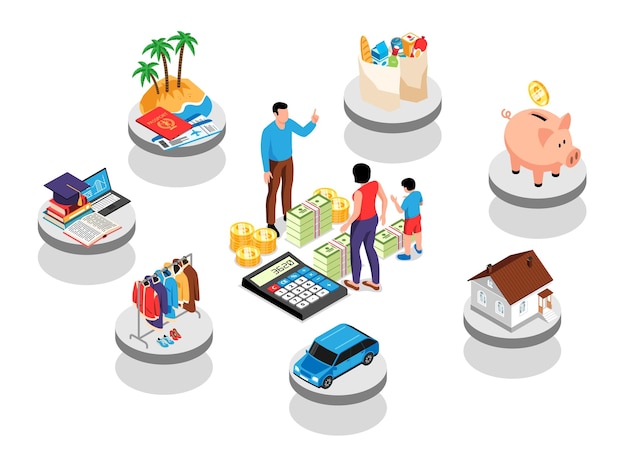
Discover and Master Personal or Household Budget Percentages You Can Actually Stick To.

BUDGETING
Looking for a way to manage your personal or family budget efficiently? If you feel puzzled about how your money slips away each month and how to keep track of your expenses, don’t worry – we’re here to help you take the first steps towards creating a budget that works for you!
First, you might be wondering:
– Where do I even start budgeting?
– What should I include in my budget?
– How much should I allocate to each budgeting category?
In this easy-to-understand guide, we explain how renowned personal finance expert Dave Ramsey makes it simple to handle your monthly budget. Whether you’re using a budgeting app or a spreadsheet, our tips will allow you to create your budget.
So here’s a budget breakdown according to Dave Ramsey’s recommendations:
1. Charity – 10%
Make room in your budget for charitable causes, such as education support, health aid, or poverty relief. This 10% allocation doesn’t just benefit others – it will also make you feel good knowing you’re making a difference.
2. Saving for Future/Emergency – 10%
This is a crucial budget category. Always save at least 10% for unforeseen emergencies or future savings like your retirement fund.
3. Food – 10 to 15%
Keep your food purchases, both from grocery stores and restaurants, within 10 to 15% of your income. You might save a substantial amount by cooking more meals at home.
4. Utilities – 5 to 10%
Your utility costs include electricity, water, trash services, cell phone lines, etc. Try to manage these costs effectively and consider switching providers if that helps you save money.
5. Housing – 25%
Your biggest expense is likely your housing payments – mortgage or rent, property taxes, homeowners association fees, even things like insurance and maintenance costs fall under this category.
6. Transportation – 10%
This includes vehicle payments, gas, repairs, tolls, parking, or public transport costs. Try to keep this under 10% of your budget.
7. Health – 5 to 10%
This category includes any medical expenses not covered by your health insurance.
8. Insurance – 10 to 25%
Insurance is an integral yet burdensome part of your budget and includes health, car, life, disability, and other types of insurance policies.
9. Recreation – 5 to 10%
Don’t forget to have some fun! Allocate 5 to 10% of your budget for recreational activities, entertainment, family events, and vacations.
10. Personal Spending – 5 to 10%
This category is for personal indulgences like daily coffees, salon visits, new clothes, shoes, etc.
11. Miscellaneous – 5 to 10%
Accommodate unforeseen expenses with this category. If nothing unexpected comes up, you can add this money to your savings.
If you’re facing debts, you might be wondering how Dave Ramsey would address that. His budgeting model is ideally for debt-free individuals, but you could tweak the budget to make room for debt payments by shaving a percentage off each category.
Try out Dave Ramsey’s method for yourself! Many people have found this a life-changer in managing their household budget and lowering their financial stress. Consider this as your starting point to create a budget that truly works for you.


